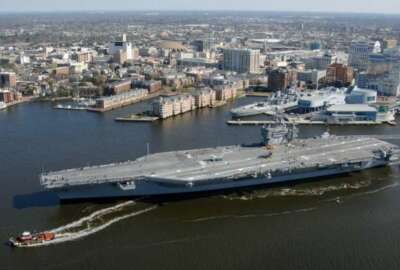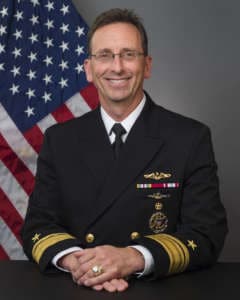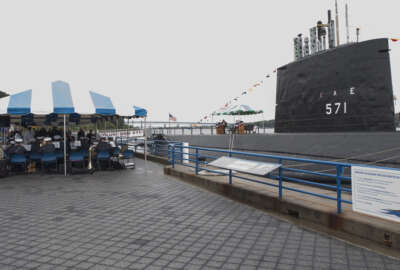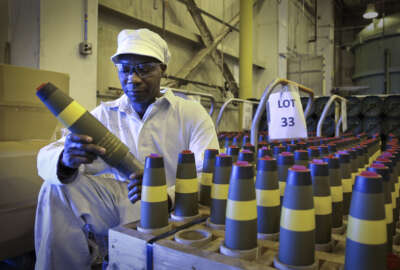
Naval research chief: AI upgrades similar to tech improvements pre-WWII
Artificial intelligence is at the top of the Navy’s list of new technologies that it wants to get involved with.
Artificial intelligence is at the top of the Navy’s list of new technologies to get more involved with. Rear Adm. David Hahn, the chief of naval research, said AI may be more important to great power competition than military power itself.
“There’s the application of machine learning or optimization of a set of systems you could think about today like the delivery of goods by a company like Amazon,” he said on Agency in Focus: Navy. “Their ability to connect to a wide variety of customers, to personalize that shopping experience, and to rapidly access a global logistics chain with end products and move those to a profit-and-loss center of one, the customer, in the time it takes for most people just to think about that. One day. That’s an amazing application of algorithms that optimize a set of distribution and delivery mechanisms.”
That’s something the Navy could benefit from applying to its own logistics.
Speed, precision
But aside from that, military leaders herald its ability to improve and speed up decision making, something they say is going to be critical in future conflicts. Hahn said commanders at war have to deal with incomplete, potentially false information while operating in faraway places with disadvantaged communication systems, and still have to make the best decisions possible. AI can help with that.

But the U.S. isn’t the only country to have realized this fact.
“China has made it very clear that the race for artificial intelligence is, in their terms, the next space race,” Hahn said. “China is pursuing that as a national initiative, and their intention, stated quite plainly, is that they want to control, not just access but control 20 percent of the world’s data by 2020 and 30 percent of the world’s data by 2030.”
But the United States doesn’t just want to compete with China; it wants to win this race. One of the main reasons, Hahn said, is that other countries don’t share the same ethical values as the U.S., and so might not come to the same conclusions about the level of trust to be put into decisions made by AI versus those made by humans.
“This notion of the artificial intelligence mechanism, the algorithm, having to explain its answer — show me the math — in a way the human can at speed understand why the machine got to that point, and agree that that’s the right course of action, especially when we’re talking about warfare, that’s something that we take very seriously,” Hahn said.
He compared the current era, especially with the pace of technological advancements, with the years immediately preceding World War II. In that time, he said, technology was also improving at breakneck speed, but crucially, like today, it’s available almost universally. No one is locked out of the current technological advances. So while things like machine learning are making life more convenient and pleasant around the world, it’s also being developed for military applications around the world.
But Hahn said the military is better positioned to take advantage of these advancements now than they were back then.
“We did not have the connectivity in an institutional sense to where these discoveries get made, largely our university system. That’s where the basic research is happening, that’s where the groundbreaking technologies are being explored,” he said. “Today the environment has a lot of that research being sponsored by commercial entities, which is different than it was in the 1940s and 50s, when most of the investment was through a government action, not a commercial entity. We see companies here in the U.S. and around the globe being able to rapidly move from discovery to application to create things like the iPhone, and all these things that we’ve become very used to. The quickness of that absorption is the issue; it’s not the inability to absorb.”
Copyright © 2025 Federal News Network. All rights reserved. This website is not intended for users located within the European Economic Area.
Daisy Thornton is Federal News Network’s digital managing editor. In addition to her editing responsibilities, she covers federal management, workforce and technology issues. She is also the commentary editor; email her your letters to the editor and pitches for contributed bylines.
Follow @dthorntonWFED





